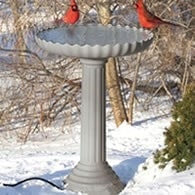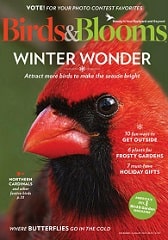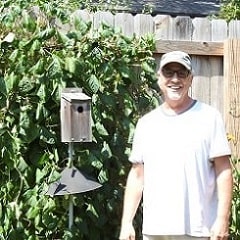Protecting Grass Seeds: Effective Strategies That Work
If you've ever tried to start a new lawn or repair some bad areas, only to watch a flock of pigeons or sparrows swoop down and feast like it's an all-you-can-eat buffet, you're not alone.
I've been there, staring at my patchy lawn, wondering if my efforts were just providing gourmet snacks for the neighborhood sparrows.
Fortunately, there are plenty of ways to outsmart our feathered friends while helping your lawn grow strong and lush.
Here's a collection of strategies - tried, tested, and even backed by experts -to get the job done.
1. Cover the Seeds: The easiest method to safeguard seeds is by covering them. There are several materials to choose from.
A light layer of straw or hay works well because it’s breathable and lets sunlight through while camouflaging the seeds.
Just make sure it's weed-free to avoid introducing unwanted plants into your lawn.
Another option is a thin layer of compost or topsoil. Not only does this shield the seeds, but it also provides added nutrients as the grass grows.
When I reseeded my lawn last year, I opted for a combination: a dusting of compost topped with straw.
It did wonders and required less watering since both materials lock in moisture.
2. Noise Deterrents: Birds are naturally skittish creatures, and sudden noises can send them flying.
Hanging wind chimes or placing motion-activated sound devices in your yard can create just enough disruption to make them reconsider snacking on your seeds.
A neighbor of mine swears by his homemade setup: he strung aluminum pie tins on a wire fence around his yard.
Every time the wind blows, the clanging sound and reflective flashes keep them from landing near his repair. Bonus: it's budget-friendly!
3. Fake Owls or Hawks: Decoy predators, like plastic owls or hawks, can be surprisingly effective. Birds instinctively avoid areas where predators seem to be lurking.
The key to success with these decoys is movement. A stationary owl that never turns its head or shifts position will quickly become background scenery.
Many people I've talked to recommend predator decoys with swiveling heads or ones mounted on poles that catch the wind.
For added realism, consider moving the decoy around your yard every few days to keep the birds guessing.
4. Mulches: Mulching can offer a dual-purpose solution: it protects seeds and helps maintain the right level of moisture for germination.
You can use lightweight, biodegradable mulches specifically designed for grass seed. They're easy to spread and break down naturally as your lawn starts to grow.
One study I came across highlighted how hydromulching - a technique often used in large-scale landscaping - helped reduce seed loss to birds by over 50%.
While hydromulching equipment might be a stretch for most of us, a simple biodegradable mulch from the garden store works well for smaller projects.
5. Hang Bird Feeders: This might sound counterintuitive, but providing an alternative food source can redirect birds away from your lawn project.
Hang feeders filled with sunflower seeds, millet, or suet cakes in an area away from your lawn.
When I reseeded my backyard, I placed two feeders at the far corners of the property. Of course I'm a bird watcher. I know some of you don't want any of them around so it's up to you.
The birds will focused on the easy meal rather than scratching through the lawn. Just make sure the feeders are far enough from the area you're trying to protect.
6. Lawn Sprinklers: Installing a motion-activated sprinkler can be an excellent way to keep them at a distance.
Not only will this startle the birds, but it'll also keep your grass seed evenly moist - a win-win for your lawn.
I've only used the sprinkler called the ScareCrow, which detects motion and releases a quick burst of water. I used it for my vegetable garden to keep cats from using it as a litter box.
While it might startle a curious bird, it's harmless and effective. I even forgot to tell my neighbor when she went to pick tomatoes! She was able to laugh about it.
7. Netting or Mesh Covers: For those who want guaranteed protection, netting or mesh covers are your best bet.
Stretch fine mesh over the seeded area and secure it with stakes or rocks. The mesh is nearly invisible from a distance and allows light and water through.
When my sister-in-law was working on her front lawn, she used a clear netting she found online. It was lightweight, easy to set up, and did the job perfectly.
After a few weeks, once the seed started to sprout, she removed the netting and let nature take its course. It's sold in garden departments as floating row cover or frost blanket.
8. Spiral Bird Deterrents: If you're looking for something that may be effective and definitely decorative, spiral deterrents could be the answer.
These reflective, spinning rods catch the sunlight and create a visual disturbance that birds tend to avoid.
I saw these in action at a community garden near my house. The gardeners hung the spirals from poles around the plot, and they added a nice sparkle but I don't know if it kept the plants safe or not.
9. Bird Repellent Grass Seed: Some seed products are coated with a repellent. These coatings are typically made from a natural, non-toxic substance that they dislike but won't harm them.
I've only heard about them but don't know much about them. I do know that birds generally have a weak sense of smell and are not bothered by hot pepper types of products, so stay away from those.
10. Sprays: I heard of concentrated sprays that you can mix in a hose end sprayer and wet down the seed that repells avian and other animals. You might have to check around for that one.
Pros and Cons of Different Strategies
| Method | Pros | Cons |
|---|---|---|
| Covering seeds | Affordable, easy to apply, protects moisture | May require regular adjustments after rain/wind |
| Noise deterrents | Budget-friendly, DIY-friendly | Effectiveness can wear off as birds adapt |
| Fake owls/hawks | Natural and non-invasive | Needs frequent repositioning to remain effective |
| Mulches | Protects seeds and aids germination | May be more expensive than other methods |
| Bird feeders | Diverts attention away from seeds | May attract more birds overall |
| Lawn sprinklers | Keeps birds away and waters lawn | Requires installation and running water source |
| Netting or mesh covers | Guaranteed protection | Labor-intensive setup and removal |
| Spiral bird deterrents | Decorative, low-maintenance | May not work against persistent birds |
| Bird repellent grass seed | Low effort | Likely not effective, check with supplier |
A different Way
I've recently seen but never tried this, and would only do so if I had a small area to repair.
In a wheelbarrow mix topsoil and seed together and sprinkle with water to get sprouting. Once it has sprouted, spread it on your prepared area and lightly rake in.
Apparently, the birds aren't as attracted to sprouted seeds.
Of course you'll have to make sure it takes root before drying out. That probably means watering twice a day. I would only try this in fall since the sun would be to hot in spring.
Frequently Asked Questions
Q: Will these methods cause harm?
A: No, all of these methods are bird-safe and designed to work without causing them harm. For example, motion-activated sprinklers startle birds with water, but they’re completely harmless.
Q: How long should I protect grass seed?
A: Grass seed typically takes 7 - 21 days to germinate, depending on the type of grass and environmental conditions. Keep protections in place until the grass is firmly rooted and less appealing to birds.
Q: What's the best budget-friendly option?
A: Covering seeds with straw or compost is one of the most affordable and effective solutions I found.
Adding simple DIY noise deterrents, like aluminum pie tins, can also work without much cost but may be a problem with neighbors.
Q: How do I keep protections in place during bad weather?
A: For methods like straw or netting, use garden stakes or rocks to anchor the materials. This will keep them from blowing away during high winds or heavy rain.
Know Your Birds
Not all birds you see on your lawn eat seeds. Pigeons, House Sparrows, and Doves are the most common and can be a real nusiance. Cracked corn is preferred by Pigeons and House Sparrows.
White millet is a favorite of all three but cost more.
If providing food, be sure to keep it as far away from your project as possible. I did it but they are used to feeders in my yard.
Overplanting
One last ditch effort is to spread more seed than you need for the area. Whenever you plant, you'll want to lightly rake things in.
Overplanting can be a problem if it all comes up as each plant needs room to grow.
But if you're sure the sparrows are getting half of it, then plant that much more. It's a practice I use in the garden for fruits and berries.
I plant enough for me and some extra for them.
A Final Note
While it's impossible to guarantee that birds won't take a nibble here and there, combining several of these strategies can dramatically reduce their impact.
I've found that layering techniques—like covering seeds with straw/compost mix and hanging feeders away from the area - can provide the best results.
So, whether you're trying to seed a small patch or an entire lawn, a little creativity and persistence will help you get the lawn you want.
And remember, they're just trying to survive - so consider finding a balance that works for both you and our feathered visitors.



